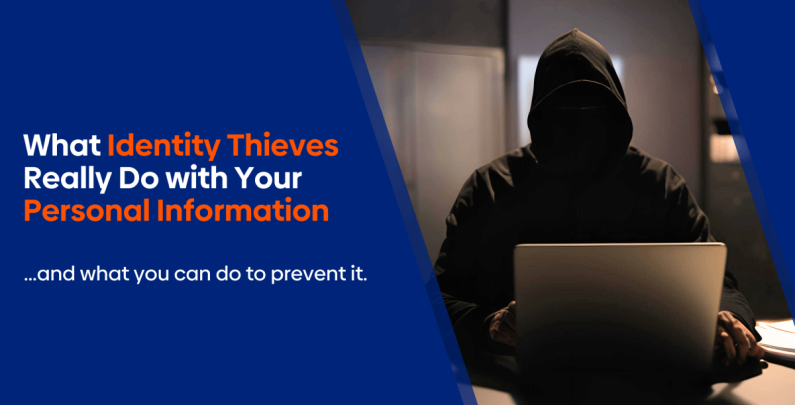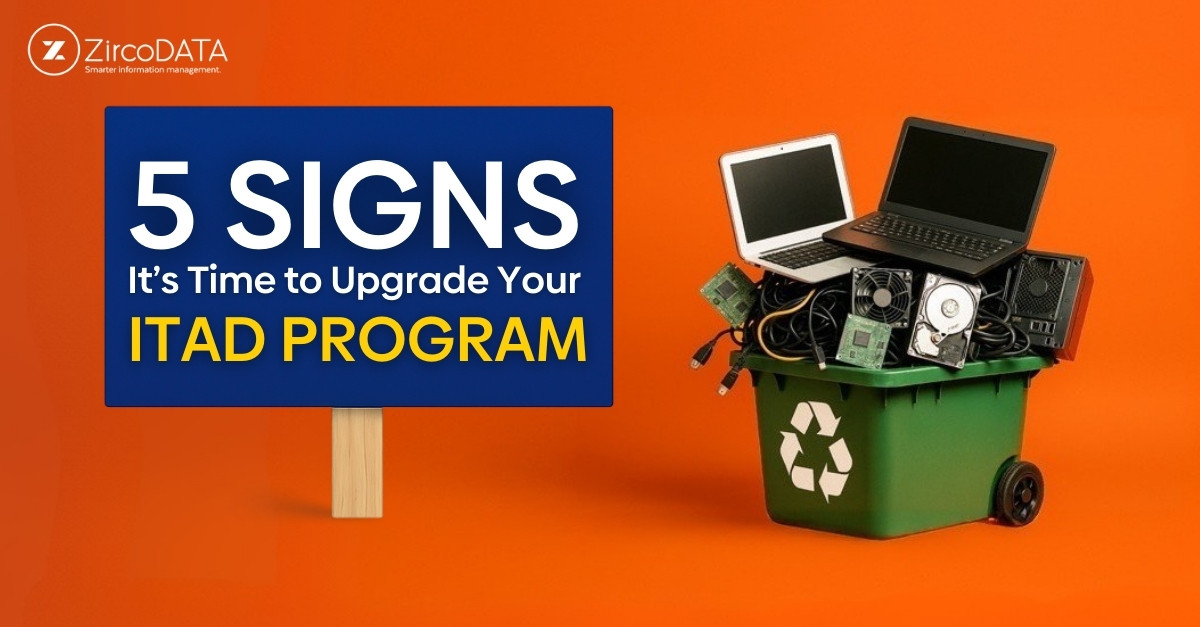
What Identity Thieves Really Do with Your Personal Information
The Rising Threat of Identity Theft in the Digital Age
Identity theft is an ever-growing concern in today’s digital world. With increasing amounts of personal data being stored online, criminals have more opportunities than ever to steal sensitive information. But what do identity thieves do with your information once they have it?
While It can be assumed that their reasons are more likely nefarious than not, the real answer is more alarming than one may have expected, often resulting in severe consequences for individuals and businesses alike. This blog explores how identity thieves steal personal data, how they monetise it, and how you can protect yourself against these threats.
How Can Thieves Steal an Identity??
Before stolen personal data can actually be misused, criminals must first obtain it strategically by identifying gaps in organisational and personal processes. These tactics require an understanding of how individuals think, act and make decisions, utilising creativity to infiltrate completely undetected, or at least until it is too late. Here are some of the most common ways identity thieves steal your information and identity:
Phishing Attacks
These include fraudulent emails, text messages, or phone calls that aim to trick victims into revealing sensitive details. A common example of this are fake banking emails prompting users to enter their private login credentials, giving the thieves easy access and control of their banking accounts.
Social Engineering Tactics
This involves manipulating people into divulging private data by impersonating trusted entities and authority figures, creating a sense of pressure and urgency that is mistaken by the victims as legitimate. For example, scammers may pretend to be someone from IT support and target a new recruit by asking for the users’ account passwords.
Data Breaches
These massive cyberattacks occur when personal details or business data are accessed, stolen, or exposed without authorisation. This information may be sold online or used to blackmail vulnerable victims. A hacker, for example, could infiltrate an online retailer’s database, stealing thousands of customer credit card details and sell them on the dark web.
Dumpster Diving
This is when thieves rummage through trash to find discarded personal information, such as bank statements, medical records or sensitive business documents. A thief may be interested in hunting down old credit card bills in a company’s dumpster to use the details to commit financial fraud.
Malware & Spyware
Malicious software, often disguised as genuine, are designed to collect personal information from vulnerable users. An individual might fall for the trap when looking online to download a particular software, only to discover later on that they used an illegitimate link and instead downloaded malware that gives the cybercriminal control of the victims’ systems.
What Can Identity Thieves Do with Your Information??
Once personal information has been stolen, criminals seek to extract value from that data in whatever way they can, often selling it to other cybercriminals or using it for direct financial gain. With malicious and criminal attacks making up over 67% of all data breaches in 2024, this process of monetisation, which is also known as “data trafficking”, operates as a primary incentive for thieves to seek out sensitive information.
1. Selling Personal Information on the Dark Web
What do identity thieves do with your information? They commonly sell it online. Stolen data, including names, Social Security numbers, and financial details, are sold in underground markets on the dark web. Prices can vary depending on the value of the data: In some cases, a single email-password combo can sell for only $1, while complete identity profiles (also called “fullz”) can fetch hundreds of dollars.
2. Credit Card Fraud & Financial Theft
Criminals use stolen credit card information to make unauthorized purchases or withdraw funds. While banks and financial institutions have systems and procedures in place to deal with financial theft, it’s often impossible to track down and recover stolen funds.
3. Creating Synthetic Identities and Medical Identity theft
Through using stolen social security numbers and other critical personal information, fraudsters can fabricate new identities to open fraudulent credit lines. For stolen medical records like health insurance documents, the information taken can be used to receive medical care, file false insurance claims, or obtain prescription drugs.
5. Business Espionage & Corporate Fraud
Compromised employee or client data can lead to fraudulent wire transfers, intellectual property theft, or unauthorized access to company systems. In some cases, businesses have been held ransom to their data, being forced into compromising and severely damaging positions.
Consequences for Victims
Operating in an ever-expanding digital world, identity theft can have far-reaching and devastating consequences. While the extent of the damage may depend on the value and volume of the stolen data, both individuals and businesses often underestimate the impact.
For individuals, fraudulent transactions, unauthorised loans, and long-term credit damage can escalate into legal troubles, denied services, and difficulties reclaiming stolen identities. For businesses, a data breach can result in severe financial losses, reputational harm, erosion of customer trust, and potential legal consequences.
Taking these consequences into consideration is fundamental in staying protected from identity thieves by helping you avoid the mistake of underestimating the impact of a small data breach.
How to Protect Yourself from Identity Theft
While cybercriminals constantly evolve their tactics, individuals and businesses can take proactive steps to protect their sensitive data from being exploited. The following strategies can help safeguard your information through creating robust barriers between your valuable identity data and those eager to exploit them.
Use Strong, Unique Passwords
As tempting as it may be to use simple memorable passwords like birthdays or the classic “Password1!”, statistically, these are the easiest for even the most amateur identity thief to crack. Avoid reusing the same password for multiple accounts, ensure you’re not using weak passwords that lack complexity and when applicable, enable multi-factor authentication for added security.
Shred Physical Documents
Sensitive paper records should never be thrown away intact. In fact, 40% of Data breaches are still paper-based. Utilise secure and reliable document shredding services that take the necessary steps to ensure confidential information is destroyed beyond recovery.
Monitor Financial Accounts
Being on top of your finances by regularly checking bank statements and credit reports for any suspicious activity is essential for minimising the impact of Identity fraud. The quicker you are able to address potential data breaches, the more time you have to avoid the damage. Keep an eye out for anything that looks out of place, no matter how small.
Always Be Wary of Phishing Attempts
When engaging in any online activity, maintaining a continuously cautious mindset should be a standard practice – No exception. Phishing attacks can be intricate and hard to spot, often only having the most minor signs of inauthenticity that can easily be overlooked. Verify all links and sender details before clicking on emails or responding to messages requesting sensitive information.
Secure your Business Data
Ensuring that your IT team has Implemented strict access controls, encrypted all sensitive files, and conducts regular cybersecurity audits can help prevent unwanted cybercriminals from accessing value information. Also making it compulsory for each team member to be across the company’s security policy through regular training activities can assist in solidifying a holistic strategy towards protecting against data breaches and identity theft.
Stay One Step Ahead of Identity Thieves
What can identity thieves do with your information? Clearly more than you probably realised. With identity theft tactics constantly evolving, staying proactive is essential. Businesses and individuals must take deliberate steps to protect their sensitive data. Secure document disposal, strong cybersecurity practices, and heightened awareness of scams can significantly reduce the risk of exposure. By safeguarding personal information and implementing robust security measures, you can stay ahead of identity thieves and prevent costly breaches.
If your organisation handles sensitive records, partnering with a trusted document security provider like ZircoDATA is essential. Our secure document storage and management, shredding, and digitisation solutions help protect your data while ensuring compliance. Contact us today to learn how we can help safeguard your information.


